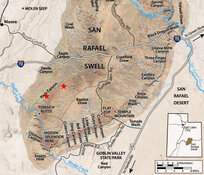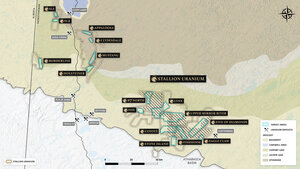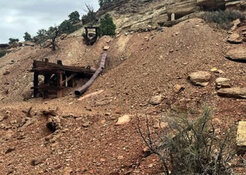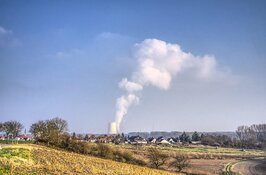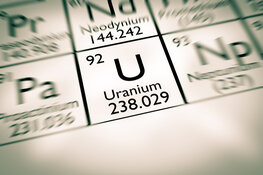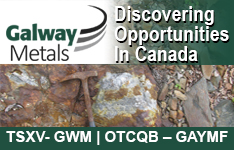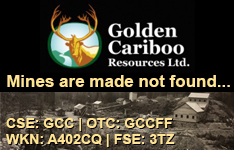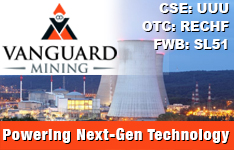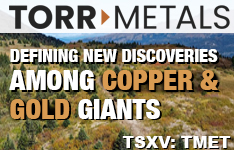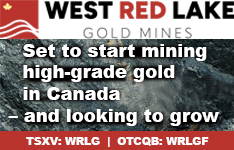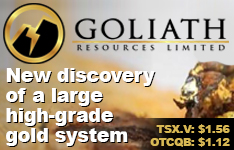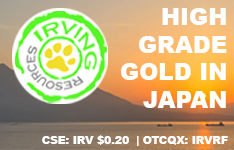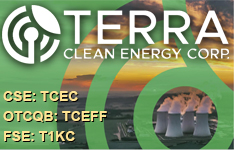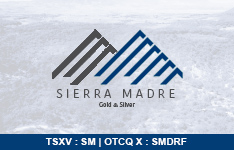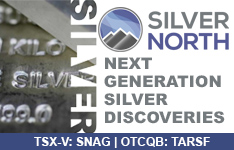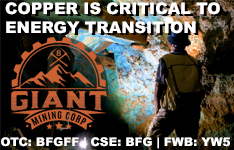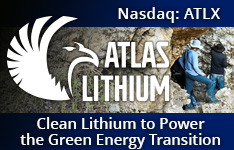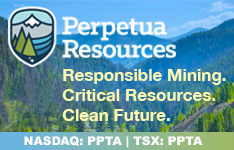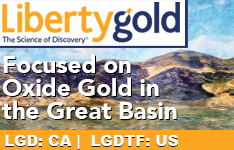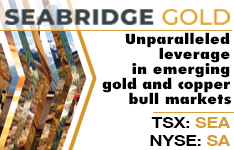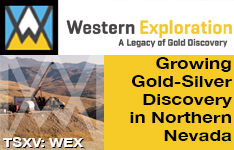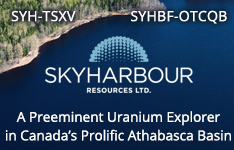Azincourt Energy Corp. (AAZ:TSX.V; AZURF:OTC) has completed its initial work program at the Harrier Uranium Project in Canada's Central Mineral Belt, Labrador. The 49,400-hectare property, which includes the Snegamook Deposit, lies adjacent to several notable uranium projects, including Paladin Energy's Michelin deposit and Atha Energy's Moran Lake project. The Harrier Project is one of the largest district-scale uranium land packages in the region and includes over a dozen known uranium occurrences. Historic surface rock samples have shown grades up to 7.48% U₃O₈, with 10 zones reporting over 1% U₃O₈.
The 2025 summer exploration program involved helicopter-supported reconnaissance of uranium showings and radiometric anomalies. Led by Vice President of Exploration Trevor Perkins, the team examined 11 previously known uranium showings and the Snegamook Deposit, resulting in the identification of two new uranium showings. Samples have been collected and assay results are pending.
Mr. Perkins stated, "We have targets at some of these showings that I would consider drill-ready," while emphasizing the project's scale and the number of anomalies still to be investigated.
"I was excited to get into the field with the crew and have a good look at the Harrier Project," commented Trevor Perkins in the news release. "The structural setting seems relatively straightforward. We have targets at some of these showings that I would consider drill-ready. At the same time, this is a huge land package with many additional anomalies yet to be examined. Our next step is planning a diamond drilling program for 2026."
A key component of the program was a detailed site investigation at the Snegamook Deposit, where previous drilling from 2007–2008 intersected uranium mineralization across widths of 20 to 50 meters. Drill core from that period remains in usable condition, and Azincourt collected new samples to verify historical grades. In addition to field inspection, the company examined the condition of the core storage and marked drill pads to validate hole positions and orientation. The Snegamook Deposit was originally the subject of a preliminary resource estimate in 2008, which Azincourt now plans to update to comply with NI 43-101 standards.
The program also advanced several other uranium showings. At Boiteau Lake, a newly discovered outcrop showed elevated radioactivity levels up to 7,200 counts per second, and historical samples in the area included assays up to 1.48% U₃O₈. In the Moran Heights area, one sample from 2024 returned 7.48% U₃O₈, while at Anomaly 7, past results reached as high as 2.12% U₃O₈. The team noted that previous drill campaigns may have undercut some of the more mineralized zones, prompting plans for 3D interpretation ahead of follow-up drilling.
Uranium Sector Dynamics Reflect Structural Supply Tightness and Jurisdictional Realignment
A September 24 report from Crux Investor stated that structural uranium supply deficits persisted as mine development timelines stretched "7–10 year development cycles even in favorable regulatory environments" while reactor demand growth accelerated through Small Modular Reactor deployment. It highlighted that "global uranium mine supply currently satisfies only 80–90% of annual reactor fuel requirements," creating persistent tightness that had increasingly relied on secondary supply sources. The report also noted that "licensed processing facilities and permitted mine sites" provided strategic advantages amid processing bottlenecks, particularly in uranium conversion capacity.
On September 30, MarketMinute reported that the global uranium market was "experiencing an unprecedented surge" driven by a "nuclear power renaissance" fundamentally reshaping clean energy and energy security. As of late September, spot uranium prices had climbed to around "US$82 per pound," with uranium mining equities and related investment vehicles showing substantial gains. The publication attributed the surge to "ambitious climate goals, geopolitical shifts prioritizing energy independence, and the insatiable power demands of the artificial intelligence revolution."
According to an October 1 update from Crux Investor, utilities had begun shifting procurement strategies away from spot exposure toward long-term contracting following volatility between 2022 and 2024. It stated, "The majority of global uranium consumption is now shifting back toward multi-year contracts" and emphasized that uncommitted and uncovered demand would create "a structural supply gap that exceeds 1 billion pounds" after 2027.
The same report also explained that efficiency gains at reactors had not reduced uranium consumption but instead increased it, noting that "higher capacity factors increase uranium consumption per reactor" as plants operated closer to full capacity. The article documented that global capacity factors had improved from 69% in 1990 to over 80% in many OECD markets by 2024.
An October 1 article on SeekingAlpha from Global X ETFs discussed recent U.S. executive orders aimed at revitalizing the nuclear sector, which sought to "expand American nuclear energy capacity to 400 Gigawatts (GW) by 2050 (from under 100 GW today)." These measures targeted regulatory reform, streamlined reactor licensing timelines, and opened government uranium stockpiles to private developers. The publication described the orders as "potentially the most consequential policy actions enacted on behalf of the nuclear industry in the 21st century," reflecting a shift in policy support, private investment, and public sentiment.
Stephen Roman, President and Chief Executive Officer of Global Atomic, quantified the U.S. supply shortfall in the October 1 Crux Investor article: "They're burning 50 million pounds a year, they're making with everything ramped up four or five million pounds a year in the United States." This gap underscored the growing importance of allied jurisdictions such as Canada and the United States, which the report stated were "best positioned to capture pricing leverage" as utilities moved away from sourcing uranium from higher-risk regions like Kazakhstan and Niger.
2026 Drill Planning Underway Across Multiple Targets
Azincourt Energy is now advancing toward a multi-pronged 2026 exploration program based on findings from the completed fieldwork. According to its corporate presentation, the company plans to conduct diamond drilling at the Snegamook Deposit, targeting uranium lenses previously traced over 300 meters and down to 200 meters depth, with historical intercepts including 206 ppm U₃O₈ over 73 meters and 0.974% U₃O₈ over 0.5 meters.
In addition to Snegamook, Azincourt aims to begin drilling at Moran Heights and Boiteau Lake. Structural mapping is planned for the Boiteau corridor, where multiple uranium-bearing fractures and new showings have been located. These upcoming programs are designed to refine the geological model and support the development of a compliant resource estimate.
 Streetwise Ownership Overview*
Streetwise Ownership Overview*
Azincourt Energy Corp. (AAZ:TSX.V; AZURF:OTC)
The Harrier Project continues to stand out due to its scale, historical data, and location within a proven uranium belt. With 12 known mineralized zones, proximity to established deposits, and modern exploration methods now being applied for the first time in many areas, Azincourt has assembled a sizable portfolio of drill-ready and near-drill-ready targets across its Labrador holdings.
In a July 24 research note from David Talbot at Red Cloud Securities, Talbot gave the company a Buy rating.
Ownership and Share Structure
According to Refinitiv, insiders and institutional investors own 0.78% of Azincourt Energy. President, CEO and Director Alex Klenman is the major shareholder, with 0.34%. Other insider shareholders are Director Paul Reynolds and Vice President of Exploration Trevor Perkins.
Institutional investors include Arrow Capital Management LLC and Tidal Investments LLC. The rest is in retail.
Azincourt has 453.92 million (390.54M) outstanding shares and 387.5M free float traded shares. Its market cap is CA$5/64 million. Its 52-week range is CA$0.01–CA$0.045 per share.
| Want to be the first to know about interesting Uranium investment ideas? Sign up to receive the FREE Streetwise Reports' newsletter. | Subscribe |
Important Disclosures:
- Azincourt Energy has a consulting relationship with Street Smart an affiliate of Streetwise Reports. Street Smart Clients pay a monthly consulting fee between US$8,000 and US$20,000.
- As of the date of this article, officers and/or employees of Streetwise Reports LLC (including members of their household) own securities of Azincourt Energy.
- James Guttman wrote this article for Streetwise Reports LLC and provides services to Streetwise Reports as an employee.
- This article does not constitute investment advice and is not a solicitation for any investment. Streetwise Reports does not render general or specific investment advice and the information on Streetwise Reports should not be considered a recommendation to buy or sell any security. Each reader is encouraged to consult with his or her personal financial adviser and perform their own comprehensive investment research. By opening this page, each reader accepts and agrees to Streetwise Reports' terms of use and full legal disclaimer. Streetwise Reports does not endorse or recommend the business, products, services or securities of any company.
For additional disclosures, please click here.


